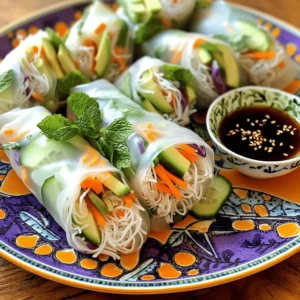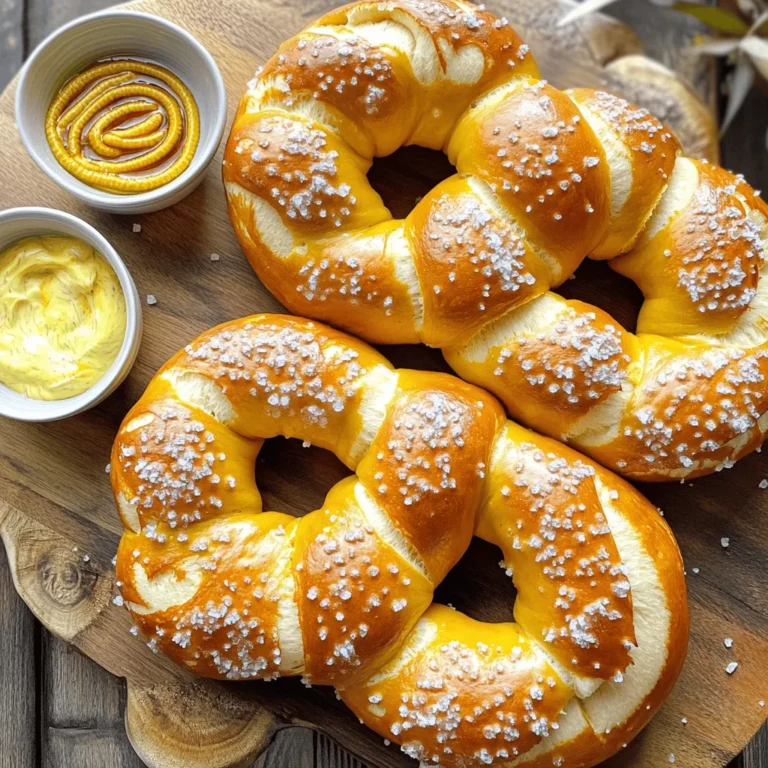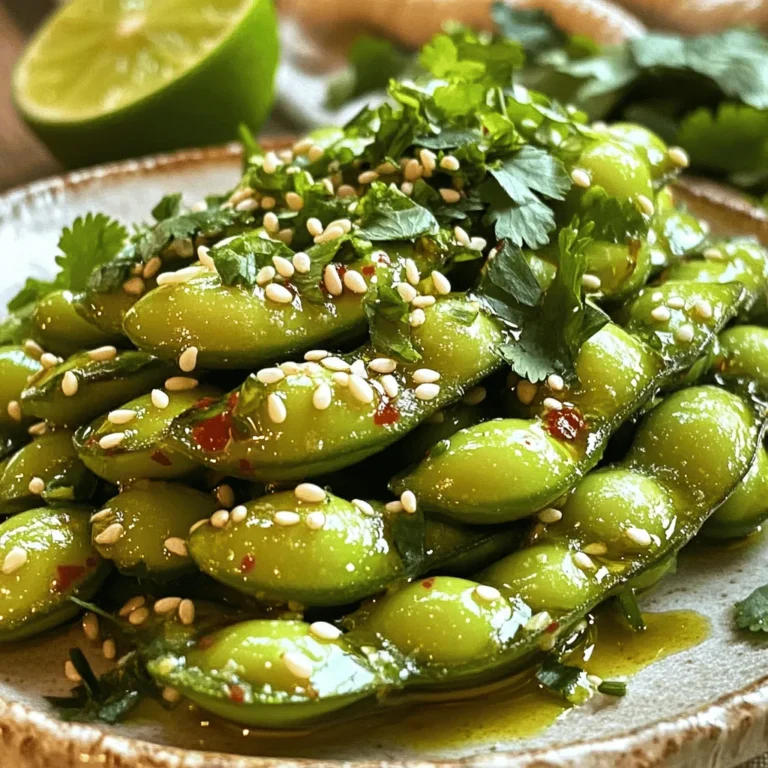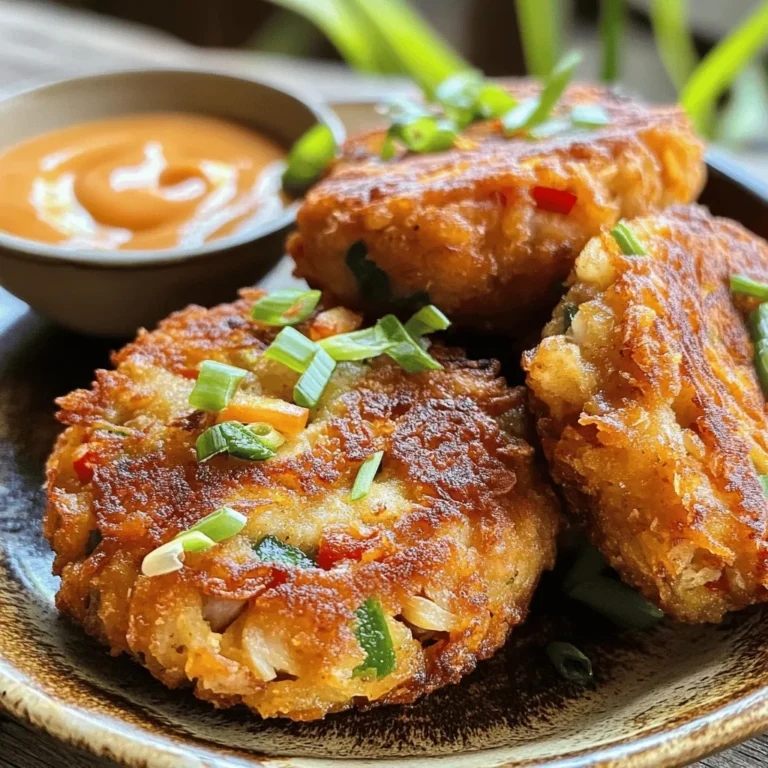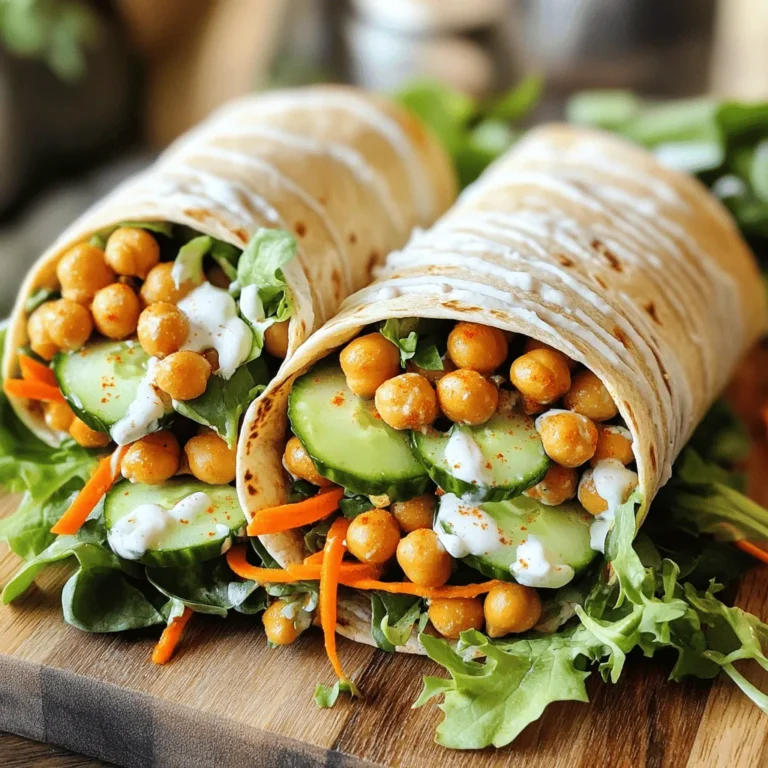Rice Paper Spring Rolls Fresh and Flavorful Recipe
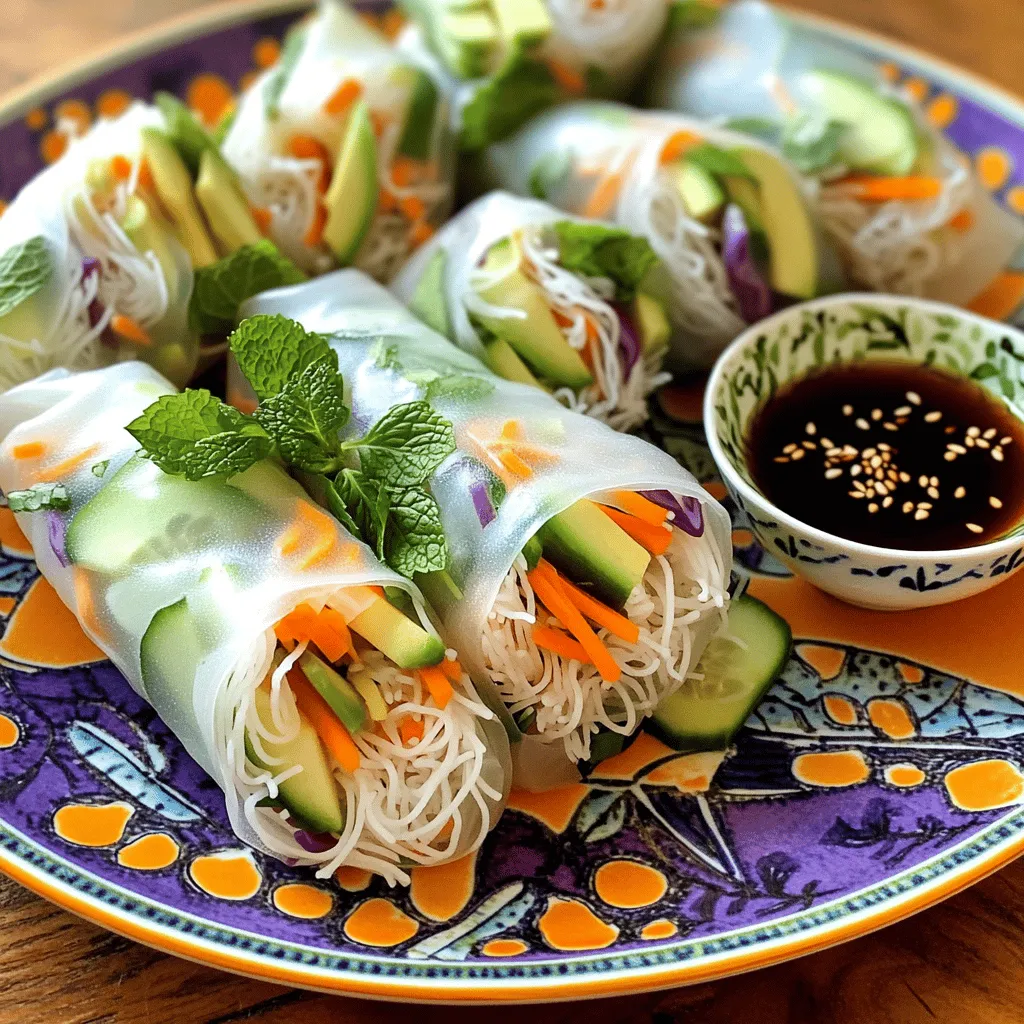
Are you ready to dive into a world of fresh flavors? Rice paper spring rolls are not only vibrant but also versatile. In this easy recipe, I’ll guide you through every step. You’ll learn how to create delicious rolls filled with your favorite ingredients. Plus, I have tips and tricks for perfecting your rolling skills and avoiding soggy messes. Get ready to impress your friends and family with these tasty treats!
Ingredients
Main Ingredients for Rice Paper Spring Rolls
To make tasty rice paper spring rolls, you need fresh and colorful ingredients. Here’s what I use:
– 10 rice paper wrappers
– 1 cup cooked vermicelli noodles
– 1 cup shredded carrots
– 1 cucumber, julienned
– 1 cup purple cabbage, thinly sliced
– 1 ripe avocado, sliced
– 1 cup fresh mint leaves
– 1 cup fresh cilantro leaves
– 1 cup cooked shrimp or tofu (optional)
These ingredients create a vibrant mix that makes each bite exciting.
Additional Filling Options
You can customize your spring rolls. Consider using these fillings:
– Sliced bell peppers
– Cooked chicken or beef
– Mushrooms
– Fresh herbs like basil or parsley
– Sliced radishes
– Bean sprouts
Feel free to mix and match these options to suit your taste.
Dipping Sauce Components
A great dipping sauce makes your spring rolls shine. Here’s what you’ll need:
– 1/4 cup soy sauce
– 2 tablespoons sesame oil
– 1 tablespoon lime juice
– 1 tablespoon honey or agave syrup
– Salt and pepper to taste
This sauce brings a burst of flavor that pairs perfectly with the rolls. You can adjust the sweetness or saltiness to fit your taste.Enjoy your spring roll adventure!
Step-by-Step Instructions
Preparing the Shrimp/Tofu
Start by cooking your shrimp or tofu. If you choose shrimp, boil water in a pot. Add the shrimp and cook for about 2-3 minutes. They should turn pink and opaque. Drain the shrimp and let them cool. If you prefer tofu, cut it into small cubes. You can pan-fry them in oil until golden or bake them at 400°F for 15-20 minutes until crisp. Allow them to cool before using.
Cooking the Vermicelli Noodles
Next, cook the vermicelli noodles. Follow the package instructions for best results. Once they are cooked, drain them well. Rinse them under cold water. This will stop the cooking process and keep the noodles from sticking together.
Making the Dipping Sauce
For the dipping sauce, grab a small mixing bowl. Whisk together soy sauce, sesame oil, lime juice, and honey or agave syrup. Taste the sauce. Adjust the seasoning with salt and pepper as needed. Set this flavorful sauce aside for later.
Soaking the Rice Paper
Now, it’s time to soak the rice paper. Take a shallow dish and fill it with warm water. Dip one rice paper wrapper into the water for about 10-15 seconds. You want it to be pliable, but not too soft. Remove it from the water and lay it flat on a clean surface, like a cutting board.
Filling the Rolls
Begin filling your rolls! Near the bottom third of the rice paper, add a small handful of the cooked vermicelli noodles. Layer on shredded carrots, julienned cucumber, sliced purple cabbage, and avocado slices. Add fresh mint and cilantro leaves. If you want, include shrimp or tofu at this stage.
Rolling Techniques
To roll it up, fold the sides of the rice paper over the filling. Starting from the bottom, roll the wrapper upwards. Make sure the roll is snug, but be gentle to avoid tearing the wrapper. Continue this process until you use all the wrappers and filling.
Enjoy your fresh and vibrant rice paper spring rolls!
Tips & Tricks
Best Practices for Rolling Rice Paper
Rolling rice paper takes a bit of practice. Here are some tips to help you out:
– Soak lightly: Dip the rice paper in warm water for 10-15 seconds. It should be soft but not too wet.
– Work quickly: Once soaked, lay the wrapper on a clean surface. The rice paper dries fast, so fill it right away.
– Layer smart: Place your fillings in the bottom third of the wrapper. This gives you room to fold and roll.
– Tight but not too tight: Roll the wrapper snugly. If you roll too tight, the paper may tear.
Ingredient Substitutions for Different Diets
You can adjust this recipe to fit your diet. Here are some easy swaps:
– For gluten-free: Use tamari instead of soy sauce.
– For a vegan option: Replace shrimp with extra tofu or add more veggies.
– Nut-free needs: Skip any nuts in your dipping sauce or fillings.
– Low-carb choice: Use lettuce instead of rice paper for a fresh wrap.
How to Avoid Soggy Rolls
Soggy rolls can ruin your meal. Here are ways to keep them crisp:
– Don’t over-soak: Keep the soaking time to about 10-15 seconds.
– Drain well: After soaking, lightly shake off excess water before filling.
– Use dry fillings: Avoid using too much wet sauce or juicy veggies.
– Serve fresh: Eat the rolls soon after making them for the best texture.Enjoy your tasty and fresh rice paper spring rolls!
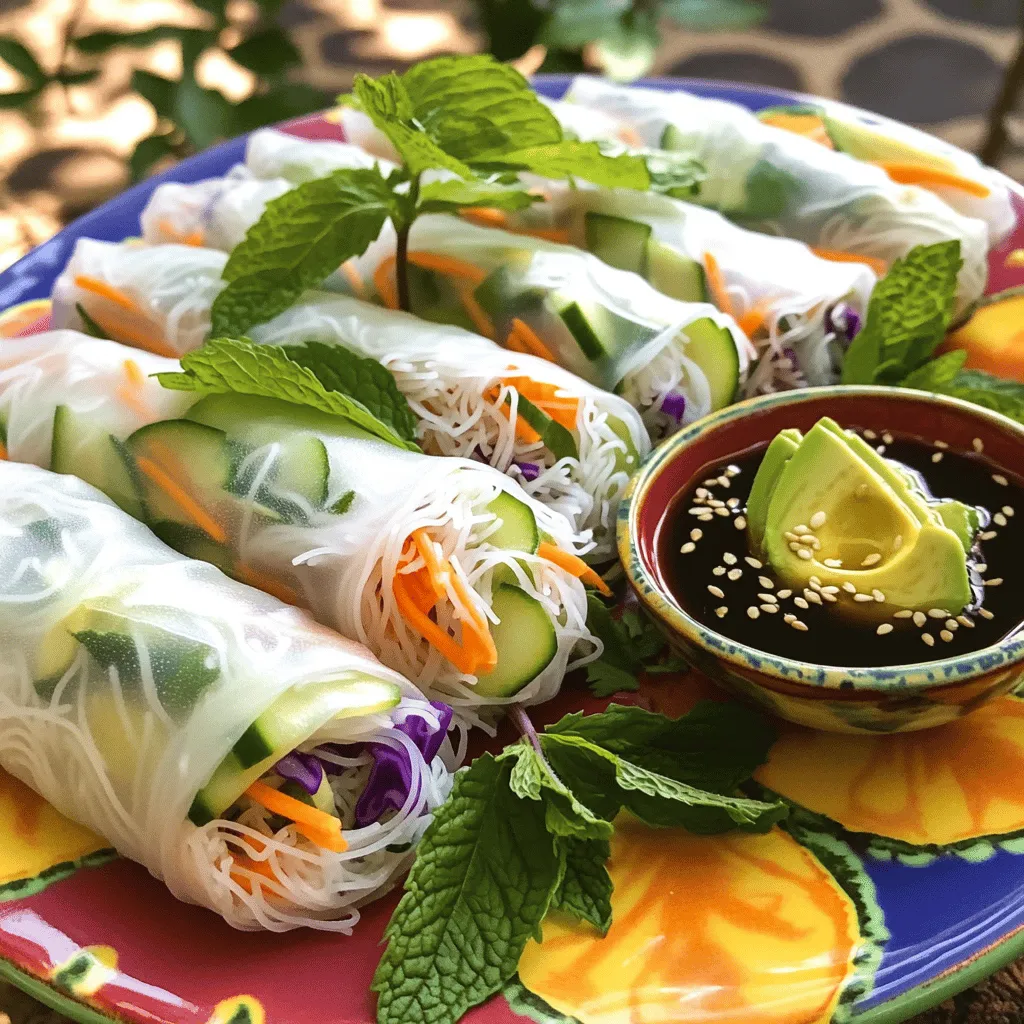
Variations
Vegetarian and Vegan Rice Paper Spring Rolls
You can easily make vegetarian or vegan rice paper spring rolls. Simply skip the shrimp or tofu. Instead, load the rolls with colorful veggies. Use ingredients like bell peppers, jicama, or sprouts. These add crunch and flavor. You can also add hummus or a nut spread for creaminess.
Creative Fillings to Try
Feel free to get creative with your fillings! Here are some fun ideas:
– Sliced mango for sweetness
– Grated beetroot for earthiness
– Cooked lentils for protein
– Fresh basil or cilantro for extra aroma
– Sliced radishes for a peppery kick
Mix and match these fillings to suit your taste. The more colorful your rolls, the more appealing they look!
Regional Variations of Spring Rolls
Different cultures have their own versions of spring rolls. For example, in Thailand, you find fresh spring rolls filled with herbs and seafood. In Vietnam, you might see rice paper rolls packed with grilled pork or seafood. In China, spring rolls often have a crispy wrapper filled with veggies and meat. Explore these styles and find your favorite!
Storage Info
How to Store Unused Ingredients
Keep any leftover ingredients in airtight containers. Store cooked vermicelli noodles in the fridge. Use them within three days for the best flavor. Fresh herbs like mint and cilantro go into water or a damp paper towel. Cover them lightly and place in the fridge. This keeps them fresh and vibrant.
Best Practices for Storing Prepared Spring Rolls
Store spring rolls in a single layer. Place them on a plate lined with parchment paper. Cover them with a damp cloth to keep them moist. If you stack them, the wrappers may stick together. You can keep these rolls in the fridge for one day. Enjoy them fresh for the best taste.
Reheating Tips for Leftover Rolls
Enjoy spring rolls cold or at room temperature. If you prefer to warm them, use a pan. Heat on low for a few minutes until warm. Avoid the microwave, as it makes them soggy. Always handle with care to keep the rolls intact. For more flavor, serve with dipping sauce when enjoying leftovers.
FAQs
How do I make rice paper spring rolls without tearing?
To avoid tearing, soak the rice paper wrappers carefully. Dip them in warm water for 10-15 seconds. They should be soft but firm enough to hold. Don’t soak them too long. Place the wrapper on a clean surface, and fill it gently. Roll tightly but not too tight. This keeps them intact.
Can I prepare rice paper spring rolls in advance?
Yes, you can prepare rice paper spring rolls in advance. Make the rolls up to a few hours before serving. Store them on a plate, covered with a damp cloth. This keeps them from drying out. If you make them too early, the rice paper may harden.
What are some popular dipping sauces for spring rolls?
Many sauces pair well with spring rolls. Here are the most popular options:
– Peanut sauce
– Hoisin sauce
– Soy sauce
– Sweet chili sauce
– Spicy Sriracha sauce
Each sauce adds a unique flavor. Feel free to mix and match based on your taste!
Are rice paper spring rolls gluten-free?
Yes! Rice paper spring rolls are generally gluten-free. The main ingredient, rice flour, does not contain gluten. Always check the packaging to ensure no gluten ingredients were added. If you avoid gluten, this is a safe and tasty option.
How to make rice paper spring rolls healthier?
To make rice paper spring rolls healthier, focus on fresh vegetables. Add more greens like spinach or kale. Use lean proteins like shrimp or tofu. You can skip heavy sauces or choose lighter options like lime juice or vinegar. This keeps the rolls flavorful but lower in calories. For a nutritious boost, add seeds or nuts!
Rice paper spring rolls are easy and fun to make. We covered key ingredients, from shrimp to sauces. You learned step-by-step how to prepare and roll these delicious treats. Plus, I shared tips to prevent soggy rolls and suggested fun variations.
Remember, these rolls are full of fresh flavors and can fit any diet. Enjoy making them your own. With practice, you’ll master the art of rolling. Now, grab your ingredients and start your spring roll journey!
